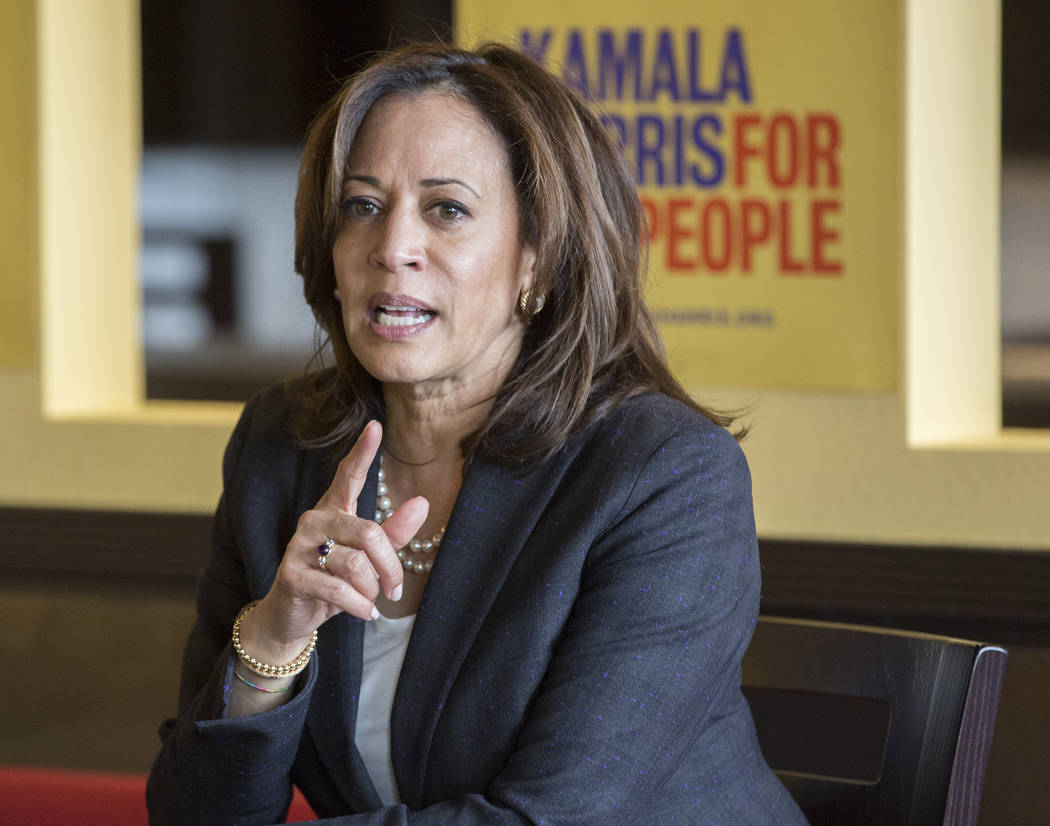Jim Hartman: Looking at the debate claims of Kamala Harris
U.S. Sen. Kamala Harris of California was credited with a political “break out” moment in the June 27 Democratic presidential primary debate by casting herself as the “the little girl in California” who integrated the Berkeley public schools in 1970.
Harris claimed authority to speak on the issue of race “as the only black person on this stage.” Her campaign created narrative seeks to place her among real heroes of the civil rights movement— Rosa Parks, James Meredith, Oliver Brown— for riding a bus to school.
Born in Berkeley, I attended Berkeley public schools (K- 12), including going to Thousand Oaks Elementary School for seven years (the school Harris claims to have integrated in 1970). I graduated from Berkeley High in 1966 (elected student body president).
Harris’s claims are both an exaggerated self-aggrandizing personal account and a defamation and distortion of the historical record on race relations in Berkeley.
Ms. Harris childhood was not in Mississippi where racial segregation was a matter of law, or in a Chicago public housing project. She grew up in a largely African-American middle-class neighborhood in West Berkeley. Both of her parents were accomplished academics—her father emigrated from Jamaica in 1961 and her mother from India in 1960. Both were awarded Ph. D. degrees from U.C. Berkeley.
As far back as 1946, Berkeley High School was not only integrated by law but fully integrated in fact —and racially diverse, after an infusion of black families moved to Berkeley during World War II. Berkeley High is the city’s only public high school, thereby drawing a student body from throughout the entire city.
Berkeley High in the 1950s was a National Bellamy Award Winner presented annually to a high school in one state-recognized best in both academic achievement and a diverse student body. In 1966, the racial composition of Berkeley High was 57 percent White, 34 percent Black, and 8 percent Asian— integrated and fully diverse.
Berkeley’s junior high schools were all integrated by 1964—before Kamala Harris was born. One junior high was already “racially balanced.” The other two were “racially imbalanced”—with that condition changed in 1964 by converting one junior high into the ninth grade campus of Berkeley High.
In 1968, Berkeley’s school board voluntarily embarked on an ambitious busing plan to “racially balance” the city’s elementary schools. Of Berkeley’s 14 elementary schools — three were found to be “racially balanced”, seven categorized “predominantly White” and four as “predominantly Black.” The plan had kids from South and West Berkeley riding buses to North Berkeley and “the hills” in grades K-3. In turn, North Berkeley and “hill” kids rode the buses in grades 4-6.
When the busing program was initiated in September 1968, Kamala Harris was 3 years old. In 1969, she was enrolled in a private Montessori kindergarten, not in the Berkeley public schools. In 1970, the third year of the busing program, Kamala Harris rode her first bus to Thousand Oaks— to a solidly middle-class neighborhood in North Berkeley, not an “affluent” school in the Berkeley Hills, as some media accounts report. She did so for three years. By 1969, Thousand Oaks was already “fully integrated”, with enrollment 40 percent African-American.
Harris left the Berkeley public schools when she was 12 years old for a life in Montreal, Canada with her mother and sister. She graduated from the prestigious Westmount High School, a 5-year English language secondary school in Quebec, joining a “Canadian elite” list of graduates. She never attended integrated Berkeley High or a Berkeley public junior high.
Berkeley saw a sharp decline in school enrollment after 1968. The city’s school population dropped from 16,000 students to 9,000 between 1968 and 1983. “White flight” from the district to the suburbs was a reality, with “Black flight” contributing as well. The plummeting enrollment spurred a second look at the plan, as did persistent academic disparities between racial groups. The two-way busing program in Berkeley ended in 1995.
A 1973 Gallup survey asked Americans whether they thought busing children was the best means of integrating the nation’s public schools. Five percent of those surveyed supported that approach; 4 percent of Whites and 9 percent of Blacks.
In November 1972, California voters overwhelmingly approved the “Wakefield Anti-Busing Initiative”—Proposition 21— winning 63 percent of the vote.
As former San Francisco mayor Willie Brown shrewdly observed, Harris’s “case against former Vice President Joe Biden boiled down in some ways to a ringing call for forced school busing. It won’t be too hard for Trump to knock that one out of the park in 2020.”
Jim Hartman is an attorney residing in Genoa. He attended Berkeley, California public schools (K-12), graduating from Berkeley High in 1966 (student body president).
















